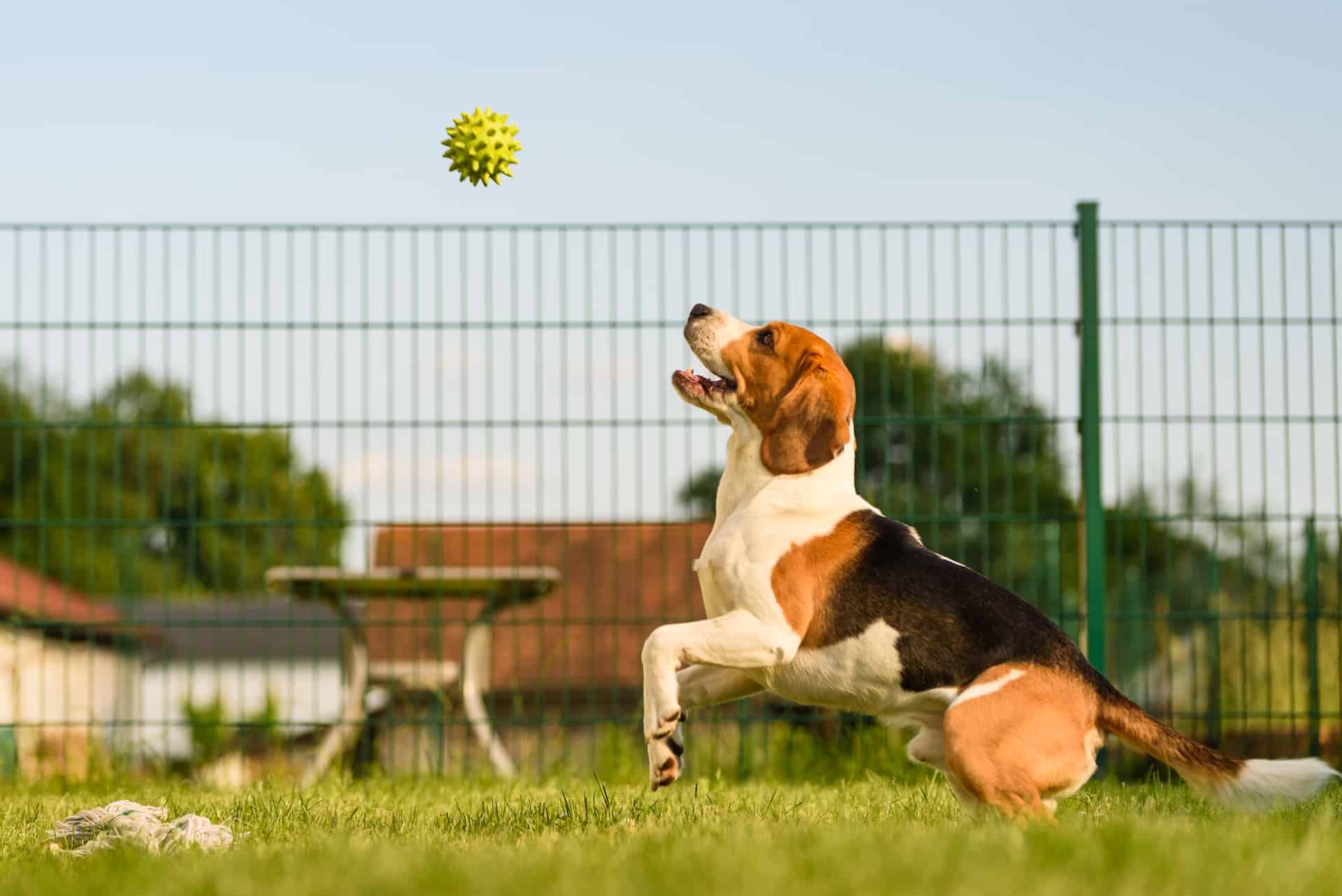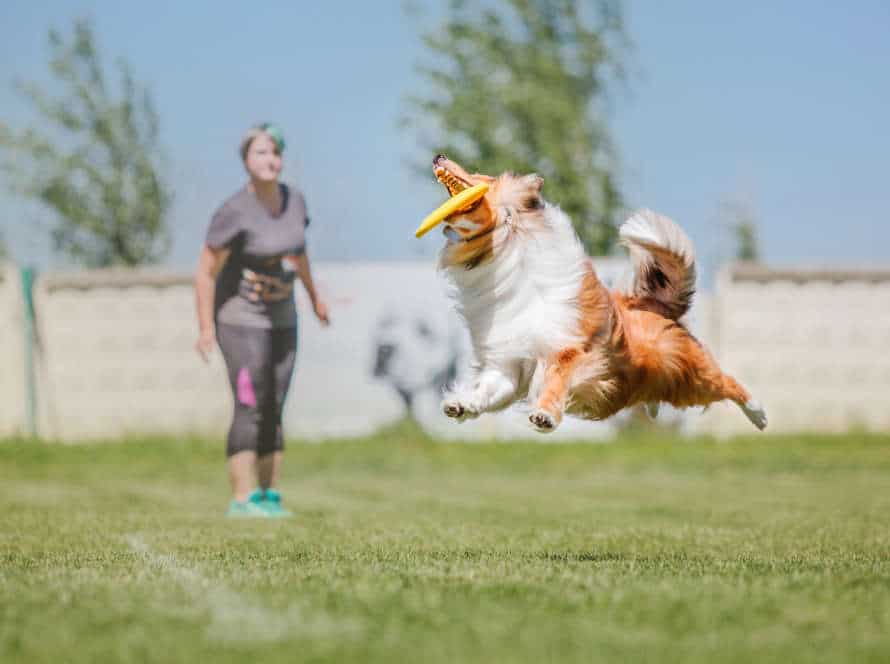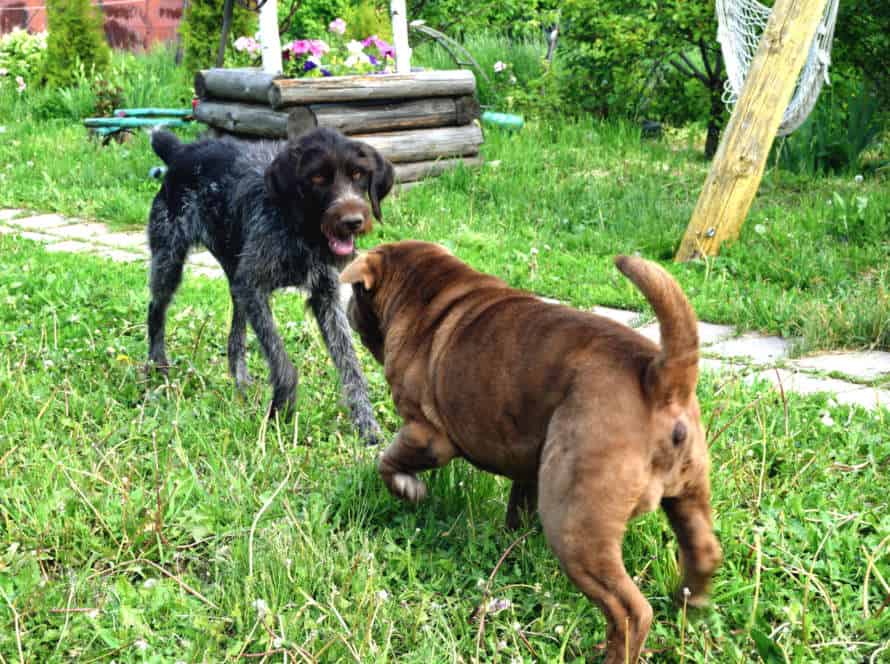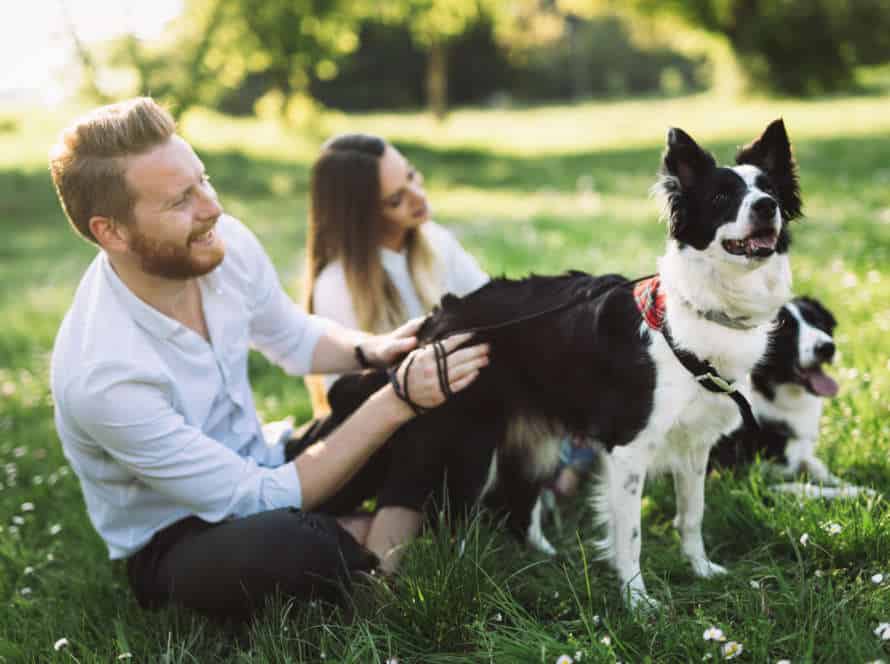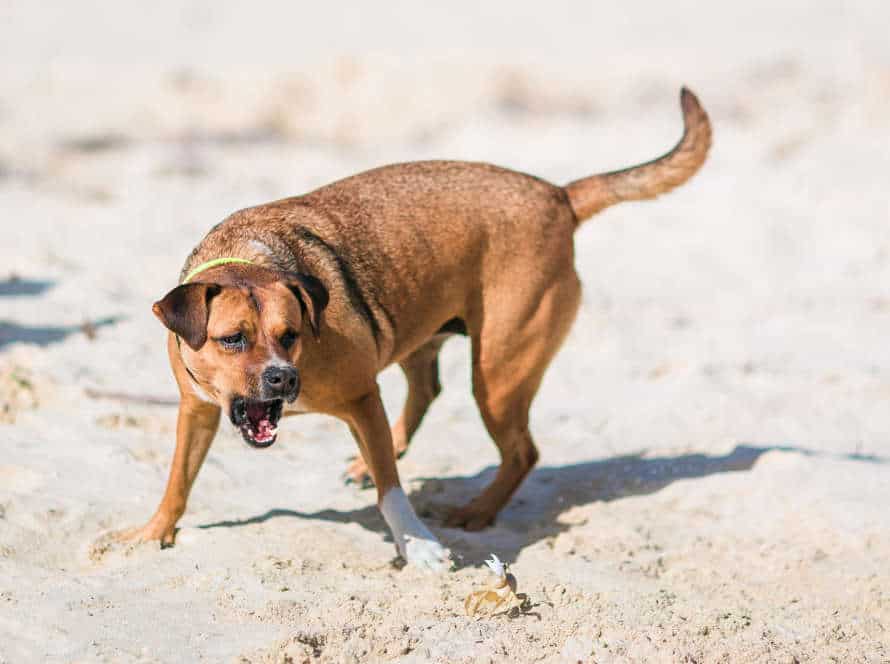The Power of Positive Reinforcement in Redirecting Jumping
Positive reinforcement can be a great way to manage your pup’s jumping. Instead of using punishment or negative reinforcement, use positive reinforcement to reward good behavior and discourage jumping. Here are some tips:
- Give treats, praise, or a toy when your dog remains calm and doesn’t jump.
- Turn your pup’s attention to a desirable activity, like sitting or shaking paws, when it starts jumping.
- Be consistent and patient. Reward good behavior and redirect bad.
With time, positive reinforcement can teach your pup to control its excitement and energy, without jumping!
Understanding Jumping Behavior in Dogs
Dogs often jump, but not always appropriately. Knowing why they jump is essential to managing the behavior. Positive reinforcement is a great tool for training dogs. It can be useful in redirecting jumping. In this article, we will explore the power of positive reinforcement and how it can be used to control jumping in dogs.
Reasons why dogs jump
Pups can jump for many reasons! Excitement, fear, or anxiety can all cause a pup to jump. Knowing why your pup is jumping can help you teach them differently. Common reasons include seeking love, trying to be dominant, feeling scared, or excited to see you. It’s crucial to figure out why your pup is jumping to help them.
Positive reinforcement techniques such as praising them for good behavior, not giving attention when they jump, or redirecting their jumping to a toy or treat can encourage good behavior. Teaching them the “sit” command can also help.
With patience, consistency, and positive reinforcement, your pup can learn to meet you and others without jumping up.
Common situations where jumping occurs
Jumping is a common behavior in dogs that can happen in many situations. Understanding why your pup jumps and how to redirect this behavior with positive reinforcement can help build a stronger bond. Here are some common jumping situations:
- Greeting visitors? They may jump to say hello.
- Seeking attention? They may jump to get your attention or a treat.
- Playing? Jumping is a way for dogs to play with each other or their owners.
- Anxiety or stress? In some cases, it could be a sign of anxiety or stress.
To redirect their jumping, use positive reinforcement and reward them for good behavior. This will help them learn that good behavior will lead to positive outcomes. Consistency is key!
Negative consequences of jumping
Jumping is an instinctual behavior in dogs that can lead to negative outcomes. Such as injury, fear, and lack of socialization. Knowing why the dog does it, and using positive reinforcement techniques, can help redirect the jumping into more desirable behavior.
- Injury: Jumping can cause harm to the dog or the person. Redirect the behavior towards a sit or stay command. Use positive reinforcement such as treats or toys.
- Fear: Jumping can be scary, especially for kids. Teach the dog “leave it” and “off” to show them jumping is not allowed.
- Lack of socialization: Indicates the pup was not properly socialized. Use positive reinforcement to train them to greet people politely and give rewards for not jumping.
The Power of Positive Reinforcement
Positive reinforcement is a must for changing jumping behavior in dogs. Reward the action with something attractive, and the behavior will happen more often! This tool is essential for redirecting jumping. Let’s explore the power of positive reinforcement and how it works on jumping behavior.
Definition and examples of positive reinforcement
Positive reinforcement is a psychological technique. It involves rewarding desirable behavior with positive stimuli. This increases the chance of the behavior happening again in the future.
Examples of this are:
- Giving a child a candy for doing a task.
- Praising an employee for achieving their target.
- Offering a bonus to a team that finishes a project earlier than planned.
Positive reinforcement can also be used to change unwanted behavior. For example, if a dog jumps on someone, the person can ignore the dog until it stops jumping. When the dog stops jumping, the person can offer praise and attention as positive reinforcement. Over time, the dog will learn that jumping does not get positive attention, but sitting does. This technique works for many behaviors in both animals and humans.
Benefits of positive reinforcement in dog training
Positive reinforcement is an essential part of successful dog training. It has lots of advantages for both you and your pup. One of them is its effectiveness in redirecting jumping behavior.
Here are some of the advantages of using positive reinforcement in dog training:
- Trust and strong bond between the dog and the owner.
- Rewards and recognition encourage good behaviour.
- Changes the dog’s behaviour positively, in a non-threatening way.
- Reward-based training, not punishment.
- Redirects jumping to socially acceptable behavior.
- Patience, consistency and reward are key to redirecting even the most challenging jumping behavior.
- Love and reward are the two biggest motivators in dog training – an investment in your relationship with your dog that sets the foundation for a life-long bond.
Using positive reinforcement to redirect jumping behavior
Positive reinforcement is a great approach for redirecting your pup’s jumping. Punishing them for jumping can increase anxiety, so it’s best to reward them for proper behaviour.
Cross your arms and turn your back when they approach. Ignore them until they stop jumping and all four paws are on the ground. Once they do this, turn around and give them praise, attention and a treat.
Be consistent and they’ll learn that jumping doesn’t get them attention or treats. Proper behaviour is what’s rewarded.
Techniques for Positive Reinforcement
Positive reinforcement is a strong tool to change a dog’s jumping behaviour. You reinforce the behaviour you want your pup to do – then reward them when they do it right. In this piece, we’ll examine different positive reinforcement techniques to modify jumping.
Teach basic commands such as sit, down, or stay
Teach your dog basic commands like “sit,” “down,” and “stay.” It’s a great way to get them to behave. Positive reinforcement is also powerful. Here are some tips:
- Treats: Give small, tasty treats when your dog does something good. Give the treat right away to show it was the behavior that got it.
- Clicker Training: Use a clicker to make a sound they know means they did well. Click, then give a treat.
- Verbal Praise: Use a happy tone to say “good job” or “good boy/girl” when they do something right.
- Consistency: Keep using the same command each time. Give the reward right away. With consistency and positive reinforcement, your dog will learn that good behavior gets good rewards!
Use treats and praise to reward good behavior
Positive reinforcement techniques can be used to effectively modify a dog’s jumping behaviour. Treats and words of praise are the best way to encourage good behaviour. Here are some tips to follow:
- Teach your pup the basics – like “sit” and “stay”.
- Keep a treat on hand – one your pup loves.
- Whenever your dog jumps, turn away and tell them to sit.
- Once they do, reward them with the treat and praise them.
- Consistently do this and your pup will start to understand that sitting gets rewards instead of jumping.
Be patient and consistent in your positive reinforcement training, and soon you’ll have an obedient pup.
Use clicker training as a positive reinforcement tool
Clicker training has become a popular way to positively reinforce dog owners and trainers. It uses a clicker to mark desirable behavior and then reward it with treats or praise.
You can use it to redirect jumping behavior in dogs. First, train your dog to recognize the sound of the clicker as a reward.
When your dog jumps on you, give a firm “no”. Wait for calmness. Then click the clicker and give a treat or praise.
Consistently repeat the process. Your dog will soon associate good behavior with rewards. Positive reinforcement works best with consistency, patience, and praise.
Pro tip: Clicker training can also work for other common dog behaviors, like house training and leash pulling.
Addressing Common Challenges
Positive reinforcement is key to dealing with problem behaviors, such as jumping. It’s a great way to encourage the desired behaviors, decrease owners’ frustration, and develop a strong relationship between pet and owner.
Strategies can help address common issues when redirecting jumping. Here are some of them:
Dealing with easily distracted dogs
Managing easily-distracted dogs can be tricky. Positive reinforcement training is a powerful tool for changing their behavior. E.g., to stop them from jumping on people:
- Ignore ’em when they jump.
- Praise/treat when all four paws are on the ground.
- Repeat steps for consistency. Dogs need repetition & reinforcement to learn new behaviors.
- Be patient & consistent. With some effort, you can get your pup to focus & behave.
Pro tip: Use high-value treats like cooked chicken/cheese to keep them interested in training.
Adjusting to different environments
Pets can find it tough when adjusting to a new environment or life changes. Especially dogs, who may display jumping or other undesirable behavior. To tackle this issue, positive reinforcement is a useful and kind way of changing behavior.
Here’s how it works: When your pup jumps up on you or someone else, don’t react negatively. Wait until it stops, then offer a treat as a reward for the correct behavior. Keep doing this – giving a treat each time your pup does the desired behavior – and eventually your dog will learn the good behavior.
Positive reinforcement is a gentle and powerful technique to help dogs adjust to different situations and environments.
Addressing stubborn and persistent jumping behavior
Jumping is a common issue for dogs, but it can be tricky to train out. Positive reinforcement can be effective in changing and encouraging good behaviors. Here are tips for stubborn, persistent jumpers:
- Wait for all four paws on the ground before responding.
- Offer treats or praise once paws hit the ground.
- Teach alternative behaviors, such as sitting or lying down, when your pup is excited.
- Training and reinforcement will help create good habits and positive behaviors.
With patience and practice, you can teach your dog to stop jumping, and to be a great companion!
Implementing Positive Reinforcement in Daily Life
Positive reinforcement is a great way to stop dogs from jumping. It’s been used for yonks and is the most humane, efficient, and effective technique for teaching your pooch to not jump. We’ll look into the specifics of positive reinforcement, why it works, and how to use it in your everyday living.
Consistency in training
Consistency is the key when using positive reinforcement in everyday life- particularly with redirecting jumping behaviour from dogs. Here are some tips to help:
- Make verbal and physical cues for your pup’s behaviour crystal clear.
- Always give treats, compliments and affection to reward good behaviour immediately.
- Don’t reward for jumping – rather, draw your dog’s attention to more suitable behaviour.
- Get all family members involved in the training process – this way the pup gets consistent training from everyone.
Being consistent with positive reinforcement training is essential – it’s how dogs learn best and develop positive habits. Pro tip: Commemorate any small victories and progress – it will keep you and your pup motivated.
Integrating positive reinforcement in everyday interactions
Positive reinforcement is a strong tool to shape behavior and better relationships. Incorporate it in your everyday life to create a more positive atmosphere.
To redirect jumping behavior: when your dog jumps on you, don’t give attention or scold. Instead, use a command like “sit” or “stay”.
If they follow the command, give verbal or physical praise – like “good girl/boy” or a treat.
With regular practice, your pup will link the positive reinforcement with the desired behavior and eventually stop jumping.
Encouraging guests to follow positive reinforcement techniques
Encouraging guests to use positive reinforcement when interacting with pets is essential for a peaceful living environment. Jumping is a frequent issue. To stop a dog from jumping, guests should turn away and avoid eye contact. When the dog calms, guests can reward the dog with a treat or toy. If the behavior persists, guests can repeat the process and redirect the dog’s attention away from jumping using commands like “sit” or “down.” Positive reinforcement has a huge effect on pet behavior, leading to a more enjoyable home for everyone.
Conclusion and Final Thoughts
Positive reinforcement is a great way to change your dog’s jumping behaviour. This article discussed the different methods of using positive reinforcement to train dogs well and humanely. We learnt how to redirect jumping energy into something helpful. Lastly, it is smart to consider the good and bad parts of each method before choosing one.
Recap of the importance of positive reinforcement
To sum up, positive reinforcement is a great way to manage your dog’s jumping. By giving treats, praise, and attention when they do what you want them to, they will learn to obey commands and stop jumping.
Here are some points about positive reinforcement:
- It strengthens the bond between dogs and their owners.
- Avoid hitting or yelling as it can cause fear and aggression.
- You can use positive reinforcement for many kinds of training.
- Consistency is key, so reward good behavior every time.
With patience, consistency, and positive reinforcement, you can train your pup to stop jumping.
Pro tip: If you’re having trouble, try a positive reinforcement-based program. A professional trainer can help you create a personalized plan and support you.
Final thoughts on redirecting jumping behavior in dogs
Redirecting jumping behavior in dogs can be a challenge. Positive reinforcement is key. Here are some things to keep in mind:
- Dogs jump to get attention or out of excitement. Teach them that calm behavior is more rewarding.
- Ignore their jumping and reward them only when they stay calm. Give treats or praise when they greet you without jumping.
- Everyone interacting with your dog should be consistent, so as not to accidentally reinforce the jumping.
- Never use physical punishment or aversive techniques – this breaks trust and ruins your relationship.
- With patience, consistency and positive reinforcement, you can help your dog stay calm, and enjoy a better relationship with them.
Frequently Asked Questions
Q: How does positive reinforcement help redirect jumping behavior in dogs?
A: Positive reinforcement involves rewarding desired behavior instead of punishing undesired behavior. By rewarding a dog for staying calm and not jumping, they are encouraged to repeat that behavior rather than jumping.
Q: What are some examples of positive reinforcement for redirecting jumping?
A: Examples include giving the dog a treat or a toy when they remain calm, praising them for sitting instead of jumping, and providing attention and affection when they exhibit good behavior.
Q: How long does it take for positive reinforcement to work in redirecting jumping behavior?
A: The amount of time it takes for positive reinforcement to work varies depending on the dog and the level of training they have had. Consistency and patience are key to seeing results.
Q: Can positive reinforcement be used for all dogs, regardless of age or breed?
A: Yes, positive reinforcement can be used for all dogs, regardless of age or breed. It is important to tailor the training approach to the individual dog and their personality.
Q: Is it possible to redirect jumping behavior without positive reinforcement?
A: Yes, it is possible to redirect jumping behavior without positive reinforcement, but it may not have the same lasting effects. Punishing unwanted behavior can cause fear and anxiety in dogs, which may lead to more problem behavior.
Q: What are some additional benefits of using positive reinforcement for redirecting jumping?
A: Using positive reinforcement can strengthen the bond between dog and owner, improve the dog’s overall behavior and obedience, and lead to a more peaceful and happy household.

